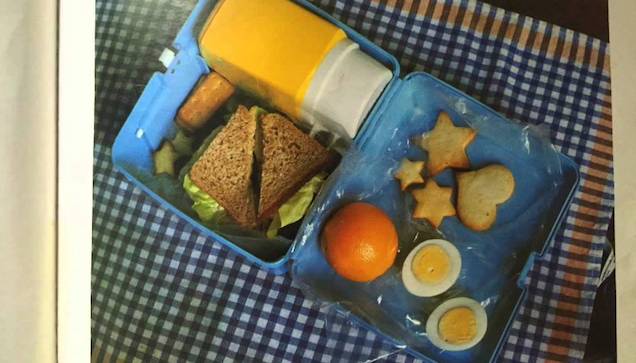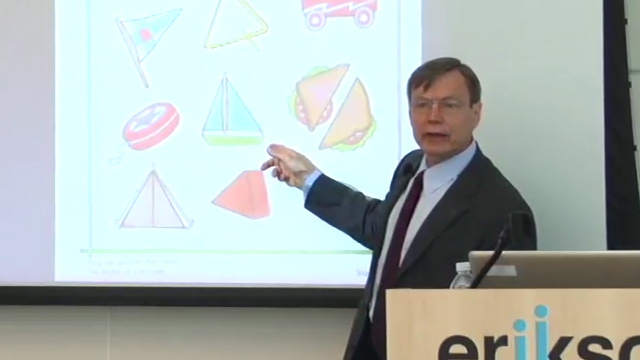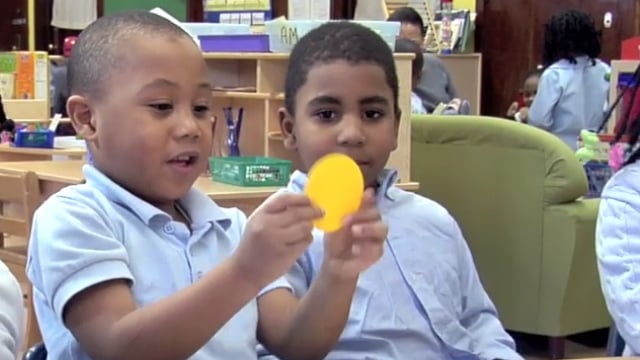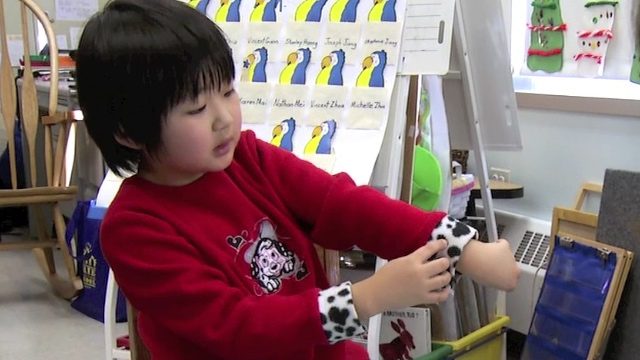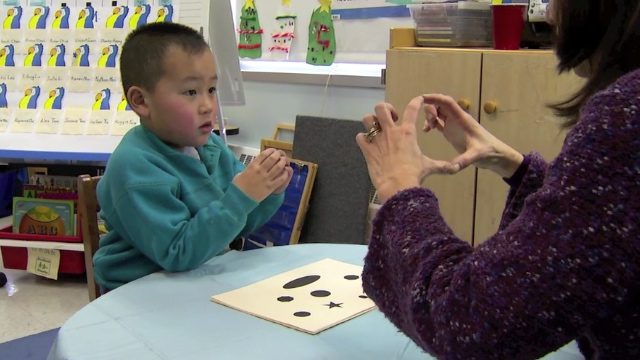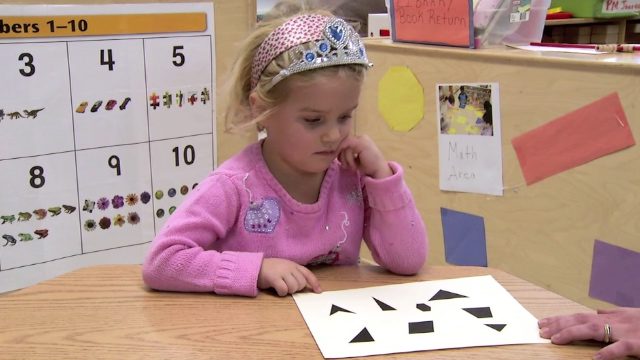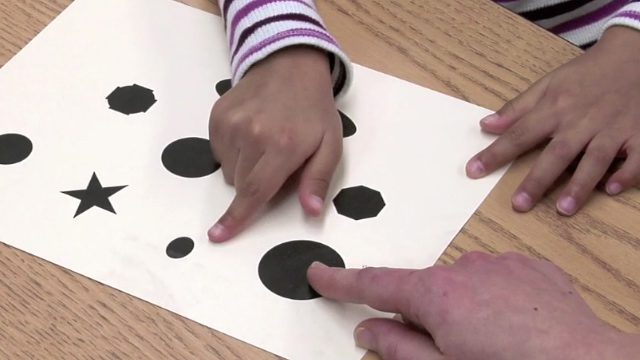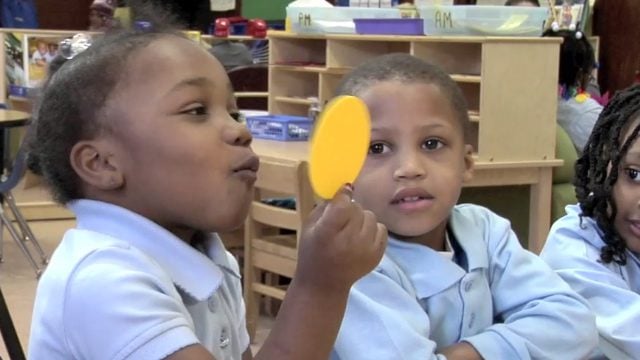Children need to go beyond the use of superficial shape labels to recognizing and specifying the defining attributes of shapes. As children sort and classify shapes with knowledgeable others, they become aware of rules about shapes, such as that a triangle has three sides and three angles (corners), that a cylinder has a rounded form with two flat ends that are in the shape of a circle, or that a sphere has only one continuous curved side. That these sorts of precise distinctions can be made is not immediately obvious to young children; for this reason, it is important that teachers design activities to demonstrate this.
© Erikson Institute’s Early Math Collaborative. Reprinted from Big Ideas of Early Mathematics: What Teachers of Young Children Need to Know (2014), Pearson Education.

